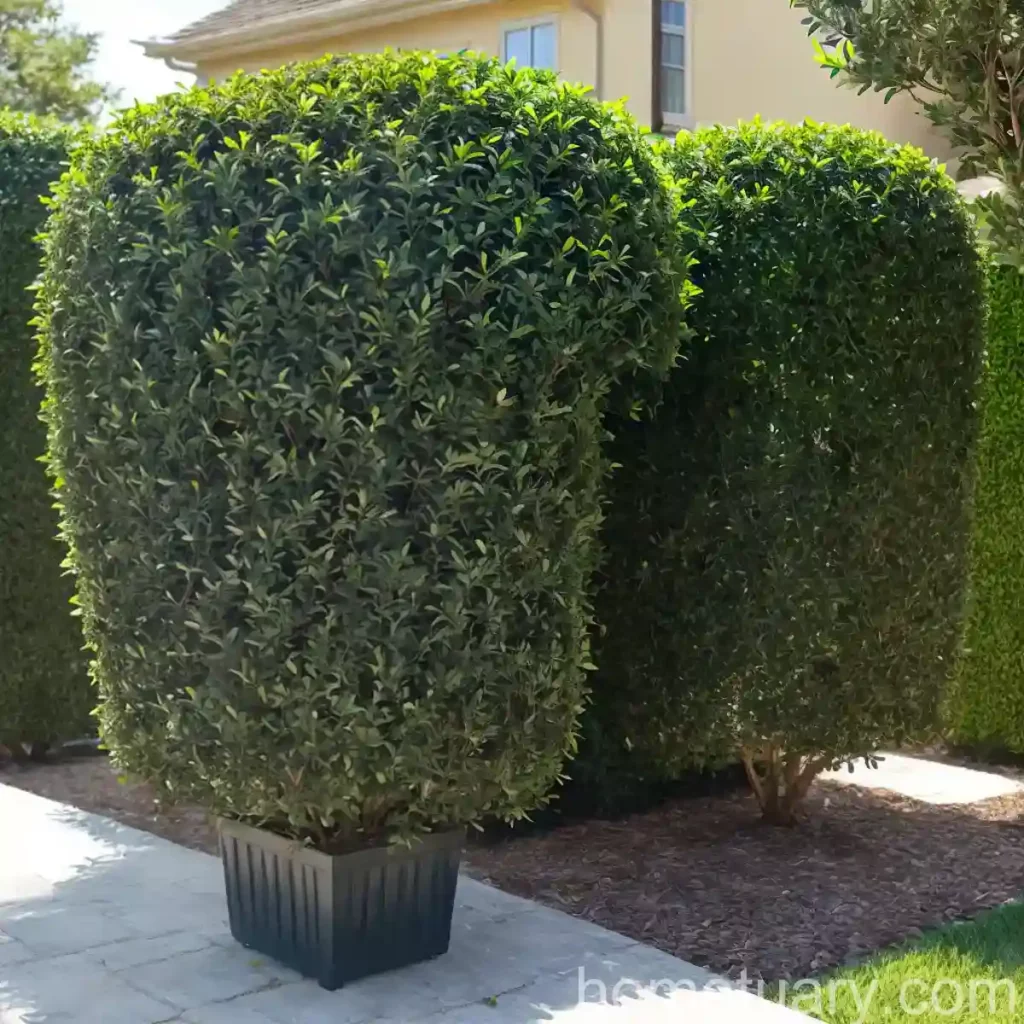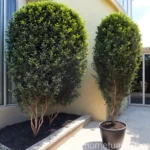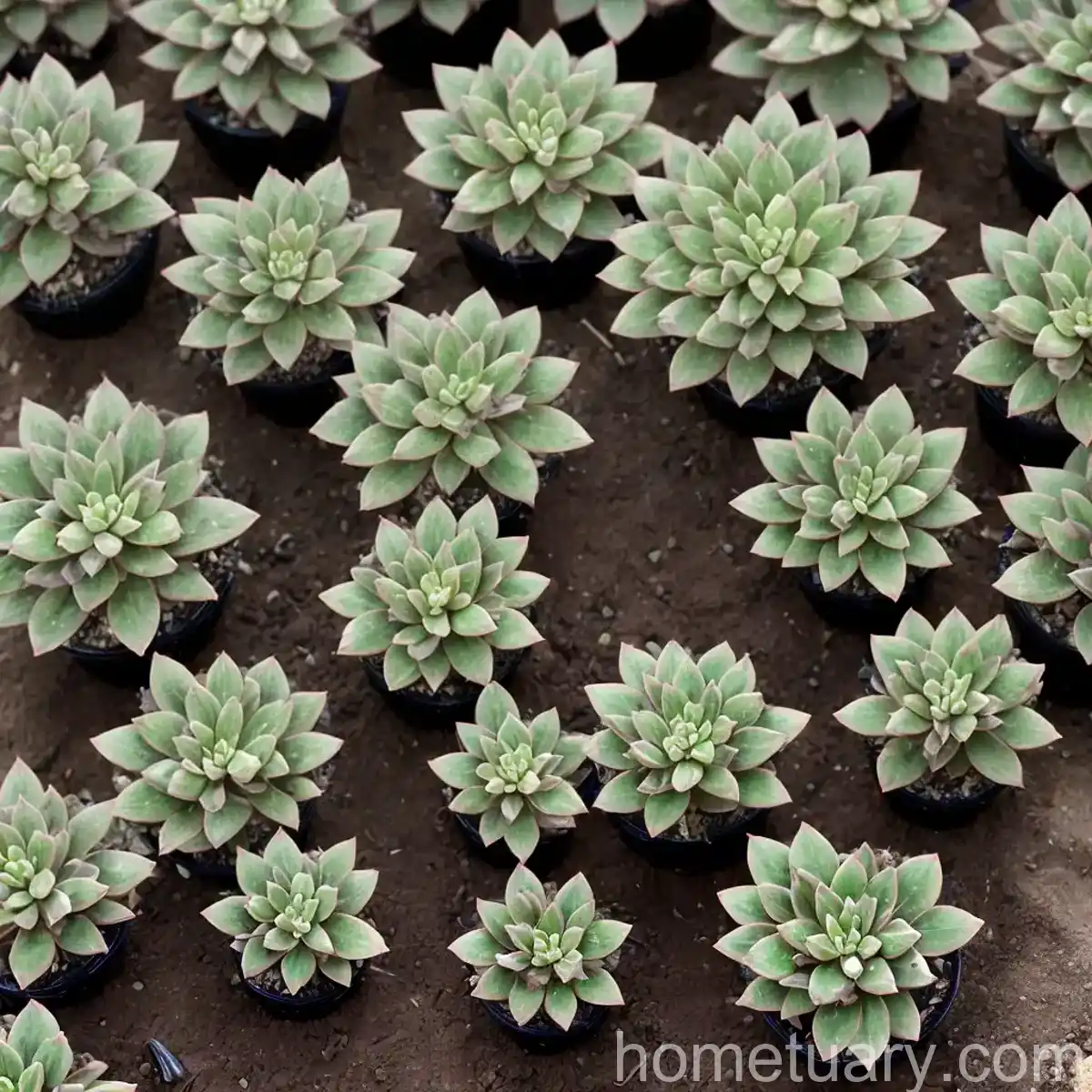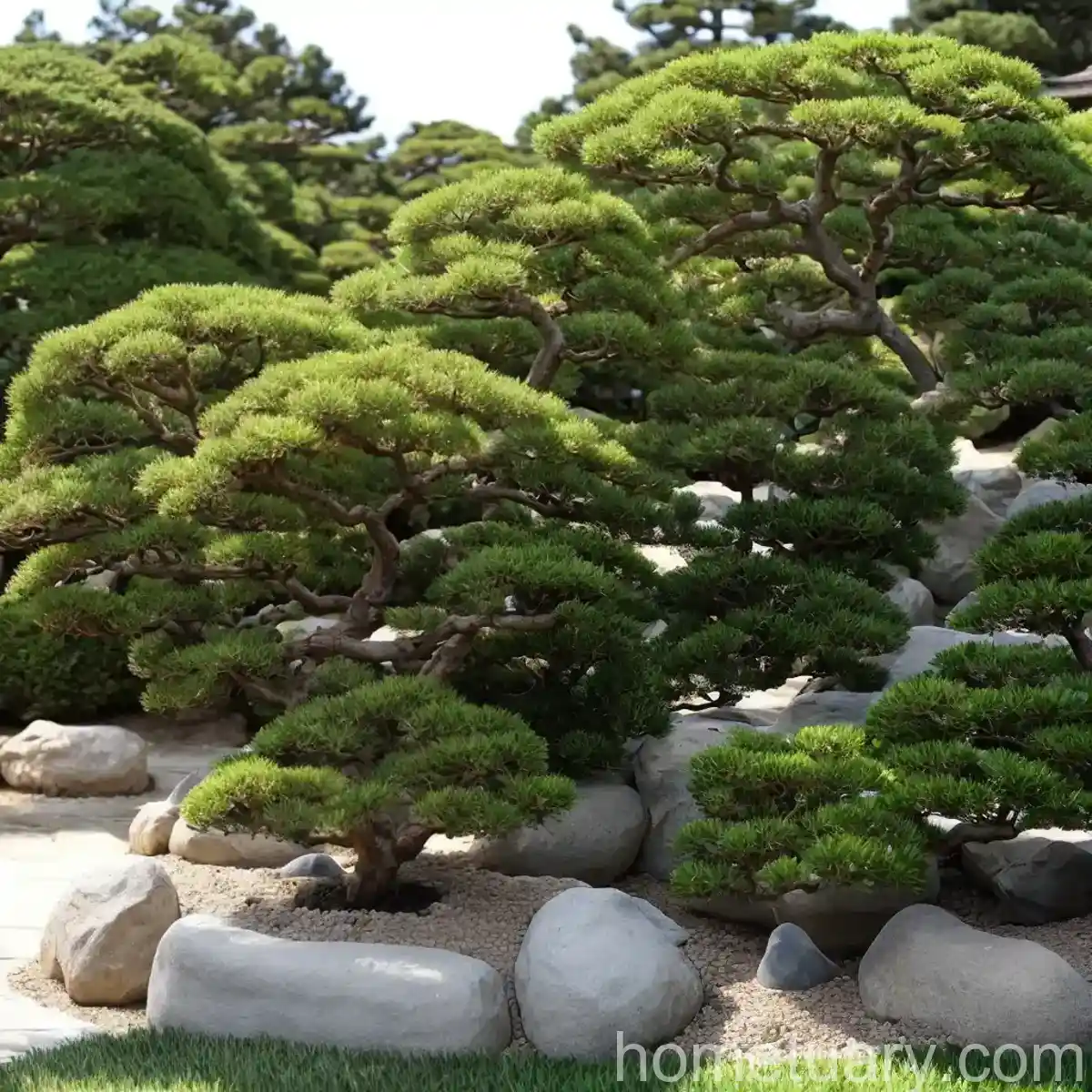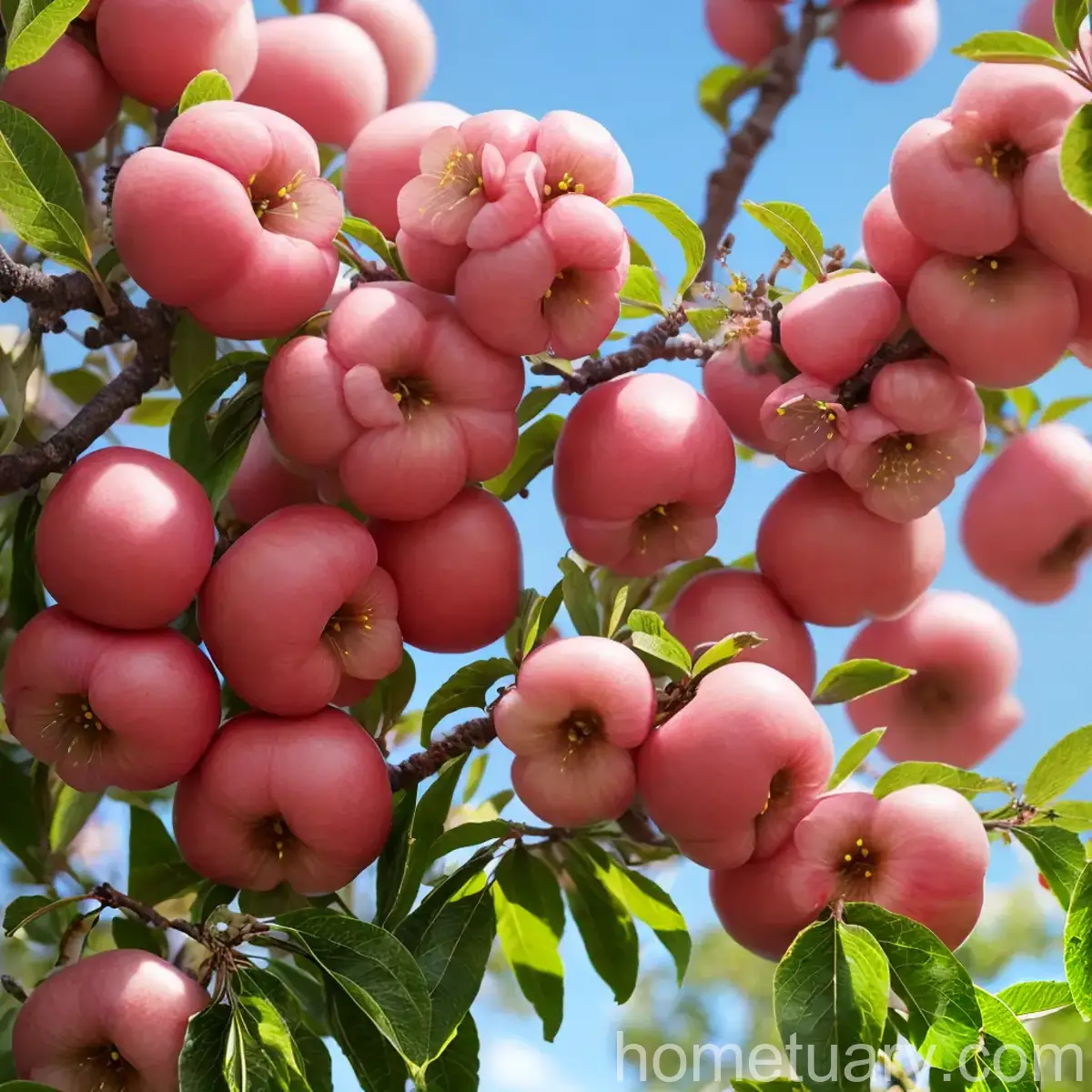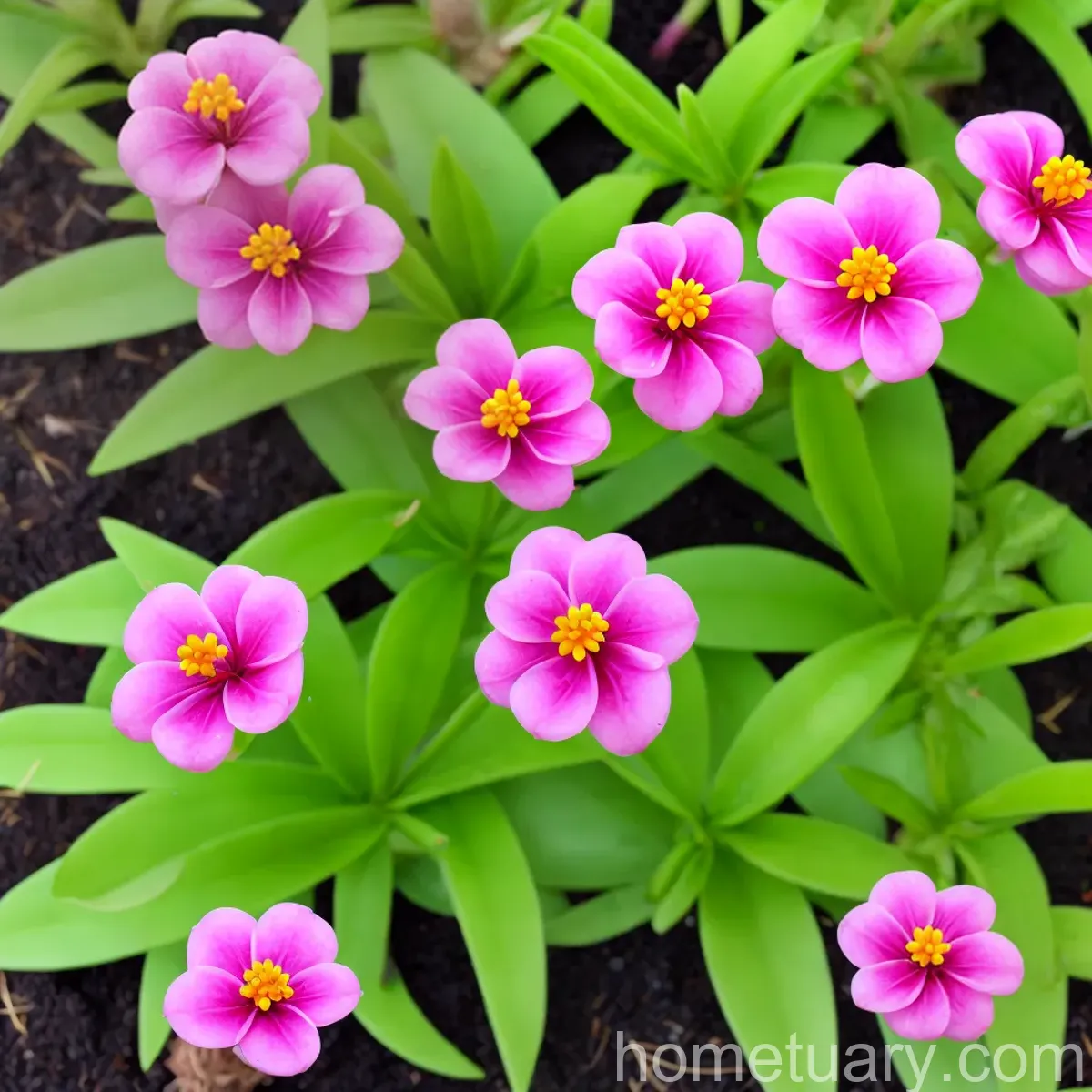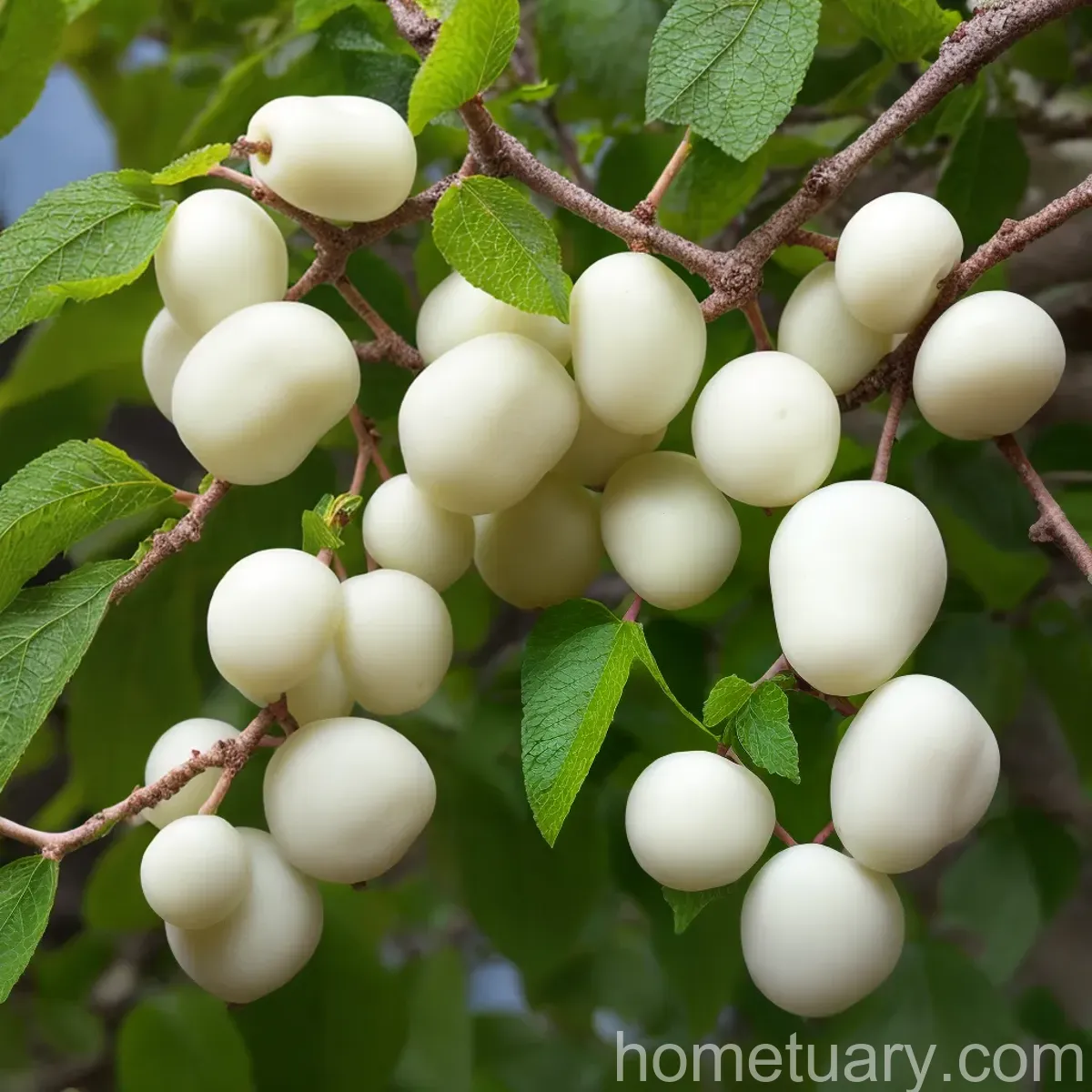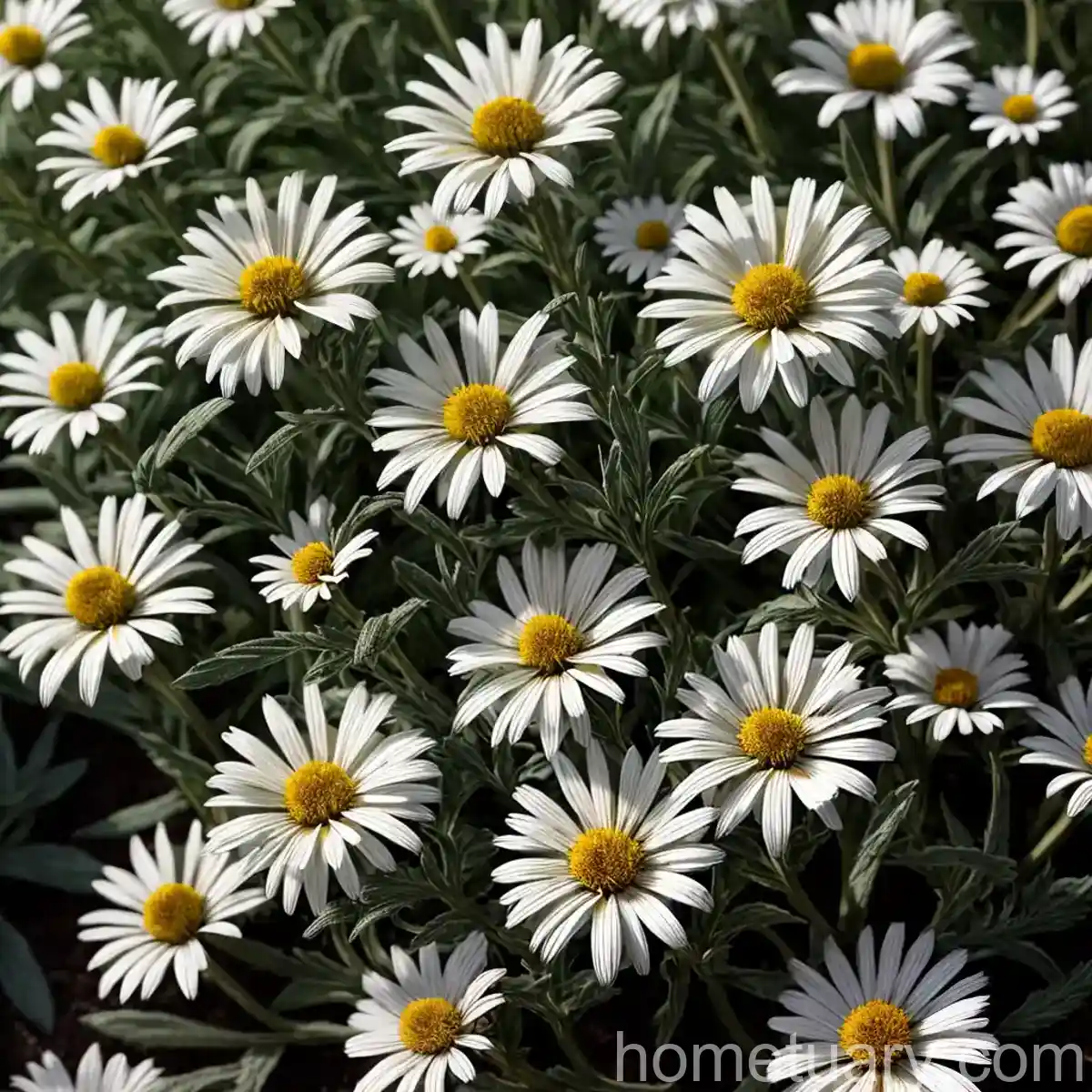Privet (Ligustrum x ibolium): An In-depth Guide
As a plant scientist, I am thrilled to share my knowledge about the remarkable plant species known as privet, scientifically referred to as Ligustrum x ibolium. Throughout this comprehensive guide, I will delve into various aspects of privet, including its culture, uses, maintenance, common diseases, and much more. Whether you are a gardening enthusiast, a horticulture student, or simply intrigued by the wonders of nature, this guide will serve as your go-to resource for all things related to privet.
What is Privet (Ligustrum x ibolium)?
Privet, also known by its scientific name Ligustrum x ibolium, is a versatile and visually appealing plant species that belongs to the olive family (Oleaceae). It is a hybrid of Ligustrum ovalifolium and Ligustrum obtusifolium, resulting in a plant with exceptional ornamental and practical attributes. Privet is renowned for its lush foliage, which makes it a popular choice for hedges, landscaping, and various other gardening applications.
Key Takeaways:
Before delving deeper into the specifics of privet, let’s quickly highlight some key takeaways about this fascinating plant:
- Scientific Name: Ligustrum x ibolium
- Common Name: Privet
- Family: Oleaceae
- Uses: Hedges, landscaping, privacy screens, wildlife habitats, erosion control, air purification, and more
- Attributes: Evergreen, highly adaptable, low maintenance, and ornamental
Now that we have a brief overview, let’s explore the various facets of this resilient and visually appealing plant.
Culture of Privet (Ligustrum x ibolium)
Cultivating privet plants successfully involves understanding their specific cultural requirements. From sunlight exposure to soil preferences, the culture of privet plays a pivotal role in nurturing healthy and vibrant specimens. Let’s delve into the elements of privet culture:
Sunlight
Privet plants exhibit remarkable adaptability to a wide range of light conditions, making them suitable for various environments. However, to ensure optimal growth and foliage density, they thrive in full sun to partial shade. Adequate sunlight exposure is crucial for promoting robust growth and the development of a dense privacy hedge.
Water
Adequate moisture levels are essential for the healthy growth and establishment of privet plants. During the initial establishment phase, regular watering is crucial, ensuring that the soil remains consistently moist but not waterlogged. Mature privet plants are relatively drought-tolerant, requiring minimal supplemental watering once their root systems are well established.
Soil
Privet plants demonstrate a preference for well-draining soil with a slightly acidic to neutral pH range. Loamy soils rich in organic matter provide an ideal growing medium for privet, promoting healthy root development and overall vigor. Additionally, ensuring proper soil drainage is essential in preventing waterlogged conditions, which can lead to root rot and other detrimental issues.
Fertilizer
When it comes to fertilization, privet plants benefit from a balanced, slow-release fertilizer applied in the early spring. This provides the necessary nutrients for robust growth and lush foliage development. Additionally, a yearly application of organic compost or well-rotted manure around the base of the plants can further enhance their vitality and resilience.
Uses of Privet (Ligustrum x ibolium)
The multifaceted nature of privet makes it a highly sought-after plant for various practical and ornamental applications. Whether it’s creating a captivating hedge, establishing wildlife habitats, or enhancing the aesthetic appeal of a garden, privet plants offer a wide array of uses. Let’s explore some of the primary applications of privet:
Hedges
Privet is widely celebrated for its excellence as a hedge plant, known for forming dense, evergreen barriers that provide privacy and security. Its vigorous growth habit, coupled with the ability to withstand regular pruning, makes it an ideal choice for creating formal or informal hedges in diverse landscaping settings.
Landscaping
In the realm of landscaping, privet offers unparalleled versatility, complementing a wide range of design schemes and garden styles. Whether used as a focal point in a garden bed or as a border plant along walkways, privet’s lush foliage and adaptable nature make it a staple in landscape design.
Wildlife Habitats
Privet plants contribute to the establishment of wildlife habitats by providing shelter and nesting sites for various bird species. Additionally, the dense foliage serves as a protective cover for small mammals and other wildlife, fostering biodiversity within the surrounding ecosystem.
Privacy Screens
Due to its dense growth habit and evergreen foliage, privet is often utilized to create effective privacy screens, shielding outdoor spaces from prying eyes and external disturbances. By forming a living barrier, privet enhances the privacy and comfort of residential and commercial properties alike.
Erosion Control
The extensive root system of privet plants aids in stabilizing soil and preventing erosion, making them valuable additions to landscapes prone to soil movement and degradation. When strategically planted on slopes or near water bodies, privet assists in mitigating the adverse impacts of erosion.
Air Purification
Like many other plants, privet contributes to air purification by filtering out pollutants and particulate matter from the surrounding environment. Its role in enhancing air quality adds to its appeal as a beneficial and eco-friendly addition to urban and suburban settings.
Medicinal Purposes
Historically, certain species of privet have been utilized in traditional medicine for their purported health benefits. While scientific studies are ongoing to validate these claims, privet continues to be of interest for its potential medicinal properties.
Ornamental Features
Beyond its practical uses, privet also serves as an ornamental plant, adding aesthetic value to gardens and landscapes. Varieties with variegated foliage or distinctive growth habits are particularly prized for their decorative appeal.
Pruning Privet (Ligustrum x ibolium)
Pruning plays a crucial role in maintaining the health, shape, and density of privet plants, particularly when they are grown as hedges or ornamental specimens. Understanding the best practices for pruning privet ensures that the plants retain their desired form and vigor. Let’s delve into various aspects of pruning privet:
Pruning Frequency
Privet plants benefit from regular pruning to promote dense growth and maintain their desired shape. For formal hedges, pruning is typically conducted 2-3 times a year to encourage a neat and compact appearance. Additionally, light pruning throughout the growing season helps manage excessive growth and enhances overall aesthetics.
Pruning Techniques
When pruning privet, it’s essential to use sharp, clean tools to achieve precise cuts and minimize the risk of damage or infection. Trimming the top growth slightly narrower than the base promotes uniform sunlight exposure, resulting in a well-proportioned and healthy hedge. Additionally, selectively removing older branches and thinning out dense areas keeps the plants vigorous and visually appealing.
Best Time for Pruning
The optimal time for pruning privet is during the spring and summer months, when the plants are actively growing. Avoiding late-season pruning is advisable, as it may stimulate a flush of new growth that is susceptible to frost damage in colder climates.
Safety Measures
When engaging in the pruning process, it’s important to wear appropriate protective gear, including gloves and eye protection, to safeguard against potential hazards from sharp branches or debris.
Pruning Tips for Variegated Varieties
For privet cultivars with variegated foliage, mindful pruning is paramount to maintain their ornamental appeal. Carefully removing any reverted green shoots and conducting periodic shaping to accentuate the variegated patterns ensures the plants retain their decorative charm.
By adhering to these pruning guidelines, individuals can ensure that their privet plants remain healthy, visually striking, and conducive to their intended uses.
Propagation of Privet (Ligustrum x ibolium)
The propagation of privet encompasses a range of methods that enable gardeners, horticulturists, and plant enthusiasts to cultivate new plants from established specimens. Whether through seeds, cuttings, or other techniques, understanding the principles of privet propagation is invaluable for expanding plant populations and creating new landscape features. Let’s explore the various approaches to propagating privet:
Propagation from Seeds
While privet can be propagated from seeds, it’s important to note that seed-grown plants may exhibit variable characteristics, including growth habits and foliage quality. To propagate privet from seeds, collect ripe berries from established plants, remove the pulp, and carefully extract the seeds. Sow the seeds in well-draining potting mix and maintain consistent moisture levels to facilitate germination. While this method allows for the creation of new plants, it may not guarantee uniform traits or rapid establishment.
Cutting Propagation
Propagating privet from cuttings offers a reliable and efficient means of generating genetically identical plants with desirable characteristics. Softwood cuttings taken from the current season’s growth, typically in the early summer, root readily under controlled conditions. By removing the lower leaves of the cuttings, treating the bases with rooting hormone, and providing optimal moisture and warmth, a high success rate can be achieved in establishing new privet plants.
Division
In some instances, mature privet plants may be propagated through division, particularly if they exhibit a clumping growth habit. By carefully dividing the root mass, ensuring each division contains viable roots and shoots, new plants can be established. Division is often conducted during the dormant season, allowing the divided segments to acclimate and grow vigorously when placed in suitable growing conditions.
Air Layering
Air layering presents an alternative method for propagating privet by inducing root formation on a stem while it is still attached to the parent plant. This technique involves making a small incision or removing a section of bark from a selected stem, applying rooting hormone or a specialized rooting medium, and wrapping the area with a moisture-retentive material. Once roots have developed, the rooted portion can be severed from the parent plant and planted as an independent specimen.
By leveraging these propagation methods, individuals can expand their privet populations, create new landscape features, and perpetuate desirable traits within the plant’s genetic makeup.
Privet (Ligustrum x ibolium) in Containers
Privet plants can thrive when cultivated in containers, offering an adaptable and visually striking option for individuals with limited outdoor space or those seeking to accentuate their living environments. Understanding the essential considerations for container cultivation is paramount in ensuring the health and vigor of privet specimens. Let’s explore the various aspects of growing privet in containers:
Container Selection
When selecting containers for privet plants, opt for well-draining pots or planters that accommodate the root system and facilitate adequate aeration. Choosing containers of appropriate sizes, complemented by drainage holes, prevents waterlogging and promotes healthy root development.
Soil Requirements
Utilize a high-quality potting mix that offers optimal drainage and aeration, fostering healthy root growth and overall plant vitality. Amending the potting mix with organic matter further enhances its moisture-retention capacity while promoting nutrient availability to the plants.
Location and Sunlight
Container-grown privet plants benefit from ample sunlight exposure to stimulate robust growth and maintain vibrant foliage. Position the containers in areas that receive at least six hours of direct sunlight, ensuring that the plants thrive in conducive light conditions.
Watering and Maintenance
Carefully monitor the moisture levels in the containerized environment, ensuring that the soil remains evenly moist without becoming waterlogged. Regular watering, particularly during the active growing season, is essential for sustaining the health and vigor of privet plants in containers.
Fertilization
Applying a balanced, slow-release fertilizer to container-grown privet plants in the early spring provides essential nutrients for sustained growth and foliage development. Follow the recommended dosage on the fertilizer label to avoid overfeeding or causing nutrient imbalances.
Pruning and Shaping
Container-grown privet plants require periodic pruning to maintain their desired form and prevent excessive growth. Lightly shaping the plants throughout the growing season promotes a compact and visually appealing appearance, ensuring that they remain suitable for container cultivation.
By adhering to these key considerations, individuals can successfully cultivate privet plants in containers, adding a touch of greenery and elegance to their indoor or outdoor living spaces.
Popularity of Privet (Ligustrum x ibolium)
Privet holds a prominent position in the realm of landscaping and ornamental horticulture, owing to its adaptability, resilience, and striking visual appeal. Its popularity transcends geographical boundaries, with a widespread presence in various regions across the globe. Factors contributing to the enduring popularity of privet include its versatility, low maintenance requirements, and remarkable utility in diverse landscaping scenarios.
Versatility
Privet’s adaptability to a range of growing conditions, coupled with its ability to thrive as hedges, ornamental plants, and wildlife habitat contributors, positions it as a versatile and multifunctional species. Its capacity to complement various design styles and fulfill practical needs underscores its enduring appeal.
Low Maintenance Requirements
For homeowners, landscapers, and garden enthusiasts seeking plants that demand minimal maintenance and care, privet emerges as an ideal choice. Its resilience to environmental stressors, coupled with the ease of establishment and growth, makes it an attractive option for those looking to enhance their outdoor spaces without undue labor or resources.
Year-Round Interest
The evergreen nature of many privet varieties ensures that they provide year-round visual interest and coverage, serving as a staple component of landscapes irrespective of the season. Whether used as a backdrop for flowering plants or as standalone hedges, privet’s timeless appeal resonates across different seasonal transitions.
Visual Appeal
With its glossy, dark-green foliage and dense growth habit, privet exudes a refined and classic aesthetic, adding a touch of elegance to any garden or outdoor setting. Additionally, the availability of variegated cultivars further expands the visual possibilities, allowing for personalized and captivating design arrangements.
Wildlife Support
Privet’s role in providing food and shelter for birds, insects, and other wildlife underscores its ecological significance, elevating its desirability for individuals seeking to create biodiverse and vibrant landscapes.
Common Diseases of Privet (Ligustrum x ibolium)
While privet is generally robust and resistant to many pests and diseases, it is susceptible to certain issues that can compromise its health and appearance. Understanding the common diseases that affect privet plants is essential for implementing timely interventions and preventive measures. Let’s explore some of the prevalent diseases that may impact privet:
Leaf Spot
Leaf spot, caused by various fungal pathogens, manifests as circular or irregular lesions on the foliage, often accompanied by yellowing or browning of the affected areas. To manage leaf spot, promptly remove and destroy infected plant material, and consider employing fungicidal treatments if the issue persists.
Powdery Mildew
Powdery mildew presents as a powdery, white coating on the leaves and stems of privet plants, detracting from their visual appeal. Adequate air circulation and the use of fungicidal sprays can help curb the spread of powdery mildew and mitigate its impact on plant health.
Root Rot
Excessive soil moisture or poor drainage can result in root rot, a serious condition that undermines the vitality of privet plants. To address root rot, optimize soil drainage, refrain from overwatering, and consider applying fungicidal treatments to contain the spread of the disease.
Anthracnose
Anthracnose is characterized by dark, sunken lesions on the leaves, often accompanied by defoliation and overall decline in plant vigor. Maintaining good sanitation practices and providing proper air circulation can help minimize the risk of anthracnose in privet plants.
Canker Diseases
Canker diseases, caused by various fungal pathogens, result in the formation of sunken, discolored areas on the stems and branches of privet plants. Pruning affected plant parts and ensuring proper nutrition and care can aid in combating canker diseases.
By remaining vigilant and implementing preventive measures, individuals can safeguard their privet plants from common diseases, preserving their ornamental value and longevity.
Disease Diagnosis and Treatment Recommendations
Diagnosing and treating diseases affecting privet plants requires a systematic approach that involves careful observation, targeted interventions, and proactive measures to prevent further spread. When confronted with signs of disease, prompt action is crucial in mitigating the impact and restoring the health of affected plants. Let’s outline a diagnostic and treatment framework for addressing diseases in privet:
Diagnostic Steps
- Symptom Identification: Carefully observe the signs and symptoms exhibited by the privet plant, noting any discoloration, lesions, or abnormal growth patterns.
- Environmental Assessment: Evaluate the growing conditions, including sunlight exposure, soil moisture levels, and air circulation, to ascertain any potential stressors or contributing factors.
- Pest Inspection: Check for the presence of pests or insect damage that may exacerbate the plant’s susceptibility to diseases.
- Laboratory Analysis: When necessary, submit samples of affected plant material to a diagnostic laboratory for pathogen identification and confirmation of disease presence.
Treatment Recommendations
- Cultural Modifications: Adjust irrigation practices, improve soil drainage, and enhance overall plant care to create an environment that is less conducive to disease development.
- Sanitation Measures: Remove and dispose of diseased plant material to prevent the spread of pathogens and reduce the likelihood of reinfection.
- Fungicidal Applications: When warranted, apply targeted fungicidal treatments following label instructions to combat specific fungal diseases such as powdery mildew and leaf spot.
- Pruning and Thinning: Prune out diseased or damaged plant parts, promoting airflow and reducing the risk of disease establishment and progression.
- Nutritional Support: Provide appropriate fertilization and soil amendments to bolster the plant’s resilience and enable it to combat disease pressures effectively.
By implementing these diagnostic and treatment strategies, individuals can effectively address diseases impacting privet plants, fostering their recovery and long-term vitality.
Common Pests Affecting Privet (Ligustrum x ibolium)
In addition to diseases, privet plants may face challenges from various pests that can compromise their health and aesthetics. Identifying common pests affecting privet and implementing targeted pest management strategies is essential in preserving the vigor and visual appeal of these versatile plants. Let’s explore some of the prevalent pests that may infest privet:
Aphids
Aphids are sap-feeding insects that colonize the tender shoots and foliage of privet plants, potentially causing wilting, stunted growth, and the production of honeydew. Natural predators, such as ladybugs and lacewings, can help control aphid populations, and horticultural oil or insecticidal soap applications provide supplementary management options.
Spider Mites
Spider mites are minuscule arachnids that often thrive in hot, dry conditions, infesting the undersides of privet leaves and spinning fine webs. Regular monitoring and the application of miticidal sprays or horticultural oils help mitigate spider mite populations and prevent extensive damage.
Scale Insects
Scale insects adhere to the stems and leaves of privet plants, feeding on plant fluids and secreting a protective waxy covering. Systemic insecticides or horticultural oils targeted at the crawler stage can effectively manage scale infestations and protect the overall health of privet plants.
Whiteflies
Whiteflies, characterized by their tiny, white, moth-like appearance, congregate on the undersides of leaves and sap nutrients from the plant, leading to yellowing and

